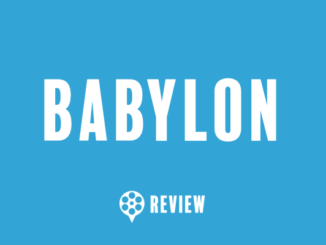I happened to watch Underworld: Blood Wars and Hidden Figures on the same day and the experience with both films was vastly different. Underworld left me completely underwhelmed while Hidden Figures left me feeling completely uplifted. I honestly wasn’t expecting to get as caught up in the story as I did but I was enthralled by this true story and what the people at the center of it accomplished. There is a reason critics are embracing it and audiences have made it the number one movie in America over the weekend. You come out of it just feeling good and that’s a great way to leave the theater.
Katherine (Taraji P. Henson), Dorothy (Octavia Spencer), and Mary (Janelle Monáe) are three best friends who work as “computers” in NASA’s pre-electronic era. The racially segregated computers are women who perform the menial and tedious computations that allow the male engineers and scientists to plot orbits and determine safety margins for rocket launches. Katherine and Mary are selected for assignments to work directly with the men while Dorothy remains behind to run the black computer room, despite being given the title of supervisor and pay raise that should go along with her responsibilities. Working on a team designing heat shields for capsules, Mary determines that she has an aptitude for engineering and, despite obstacles based on both her sex and race, she pushes forward with a single-minded determination that requires a court challenge of segregation laws for her to attend an all-white high school for classes. Meanwhile, Katherine’s skills as a mathematician get her noticed by Al Harrison (Kevin Costner), the director of the Space Task Group, who gives her increasingly important tasks as the Friendship 7 (Colonel John Glenn’s Earth orbit) mission approaches.
While researching the real life story behind the film, I found out that a few liberties were taken with the lives of the the three main women. A lot of the timeline in the film is also collapsed to streamline the narrative. The film takes place during the 1960s but many of the film’s real life events take place during the 1950s. I mention this not as a detriment to the production, which is quite good, but to educate those who want to learn more about the story so they seek out to learn more about what was accomplished. Despite being based on a true story, it’s still a Hollywood production and that aspect is a part of the story. The film is a little over 2 hours so it’s clear there is much more story to tell but this is also the power of the production. It makes you want to learn more and it deserves a lot of credit for doing that.
Writer/director Theodore Melfi (St. Vincent) has an opportunity to present three moments of triumph through these three women. The story leans a bit more toward Katherine, which makes her journey the most poignant but Dorothy and Mary get their time to shine as well. I honestly think this story can inspire women, no matter what their race is, because its depiction of triumph over the odds being stacked against you is something that is completely universal. It’s a very strong message and part of the reason I think the film is truly connecting with people who have seen it.
The film works best during the NASA scenes because that’s when the story really pops and there is a lot of energy as they all make strides to get the acknowledgement they deserve. Many of the personal segments which depict their home lives feel a tad forced. We’ve seen some of these clichéd situations before and at times they can undercut the more interesting moments that take place in the workplace. This isn’t a huge criticism because the film has many strong attributes that allow you to forgive some of the more tacked on scenes.
Despite the PG rating, the film doesn’t shy away from showing the divide between race and gender during the time. It’s not a hard hitting example of the trials and tribulations of the period but it makes its statements in a very honest way. An example of this is when they show the long, time-consuming trek Katherine must endure any time she needs to use the bathroom since the only lavatory in her laboratory is a “whites only” facility. So, rain or shine, she must go all the way to the computers’ building on the west campus to find a place where she is allowed to go. It may not be something new we’re learning about the time, but it serves the story and shows us all something we need to see in regards to how big the divide was back then.
Can I just say that this has been a great year for stand out performances from African American actors? If the material is there, performers can truly shine and all three of these ladies has had their moment to stand out. Taraji P. Henson has been on the cusp of Oscar talk for this performance and I honestly wouldn’t mind seeing her in that group of women. This is the best film performance she has had in awhile – she slays it weekly on Empire as Cookie Lyon – but I don’t think she’s had a film role like this in quite a bit. I mention Empire as well because she’s completely different here when compared to her more flamboyant TV role. This is an actress with range and I think at times it goes underappreciated. She infuses the role with heart and power.
Octavia Spencer is in a similar boat because after she won her Oscar for The Help, I don’t think she has been given as many meaty roles to really make her stand out. She more than stands out here and she could very well see a supporting nod for her work here. Also quite impressive is Janelle Monáe who I only knew of for her music but it turns out she has some acting chops too. I heard she put in good work in Moonlight (a film I haven’t seen yet) and she holds her own against her more seasoned co-stars. Support is provided by Kevin Costner and Jim Parsons who are good in their roles but there is never a moment when at least one of the three female leads isn’t in command of the screen.
You might find it hard to find these ladies in your history books and you may find yourself surprised by the fact you didn’t know how much they did but Hidden Figures is here to educate. It is a film not made to be a routine history lesson. The best thing about a film like this is that it gets a conversation started. It also allows you to seek out more knowledge so you have an even clearer picture of the story they’re telling. It’s uplifting, inspirational and definitely worth your time.
Reel Talk gives Hidden Figures 3.5 Reels





